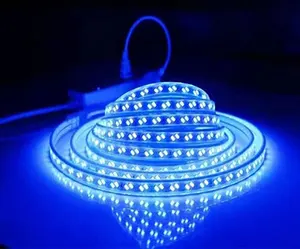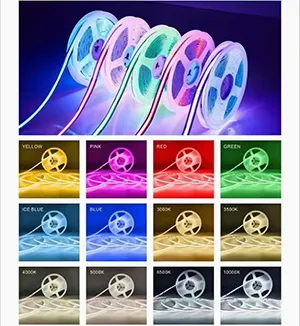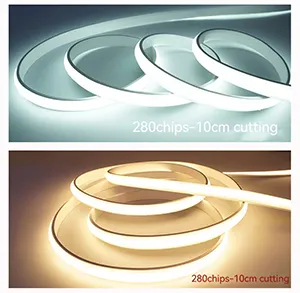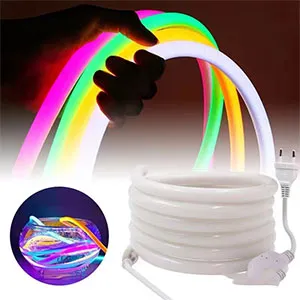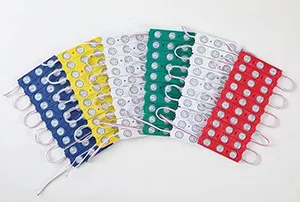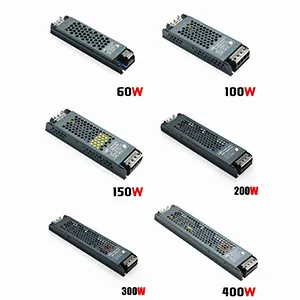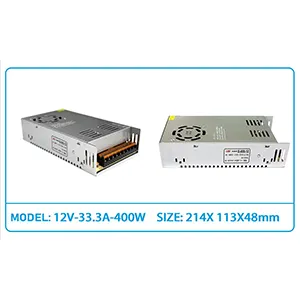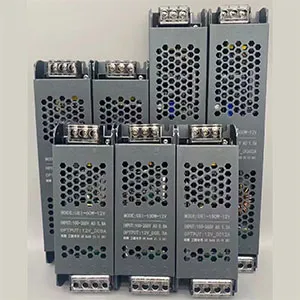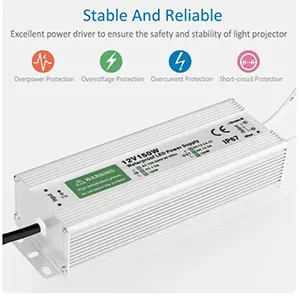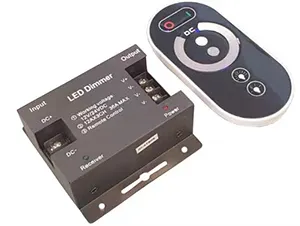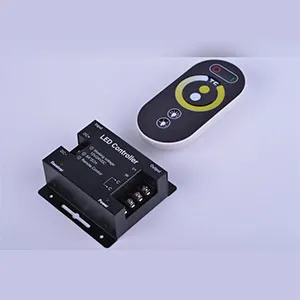5 common problems with linear light strips
Are linear light strips bright enough? Does it have to be a suspended ceiling? How to fix it if it's broken? I heard that aluminum trough lights are easy to crack on the wall? ...Linear light strips are highly decorative, high-end in design, and can also be used as basic lighting, and are favored by more and more people. Although it seems that the installation threshold is high, it is actually not that difficult to implement. Today we will answer the frequently asked questions about linear light strips.
1. Is the linear light strip bright enough? How to choose the size?
The appearance of linear light strips is obvious to all, but the biggest worry of many people is that the linear lights are not bright enough.
Let me start with the conclusion: If you want to use linear light strips as basic lighting, brightness is no problem.
In the international interior design world, there are more and more cutting-edge design cases that only use linear light strips as the main lighting of the space. The point is: as long as you choose the right lights and design them well, linear light strips can take on the responsibility of basic lighting for the space.

Space designs that only use linear light strips as the main lighting are becoming more and more common.
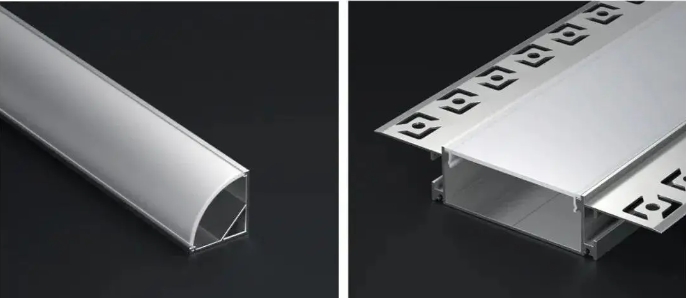
1cm wide vs 5cm wide linear light strip
① If you want the light strip to be used as auxiliary lighting, it has both decoration and basic brightness. This is the most common requirement. It is recommended to choose the 1cm wide and 6w/meter style. This style of linear lamp has beautiful proportions and appropriate brightness.
Its brightness is not very high and is suitable as auxiliary lighting. If you only use this kind of light strip for bedroom lighting and corridor lighting, the brightness is no problem; but if you only use this kind of light strip for living room lighting, it will feel too dark. It usually needs to be used with accent lighting sources such as downlights or floor lamps.
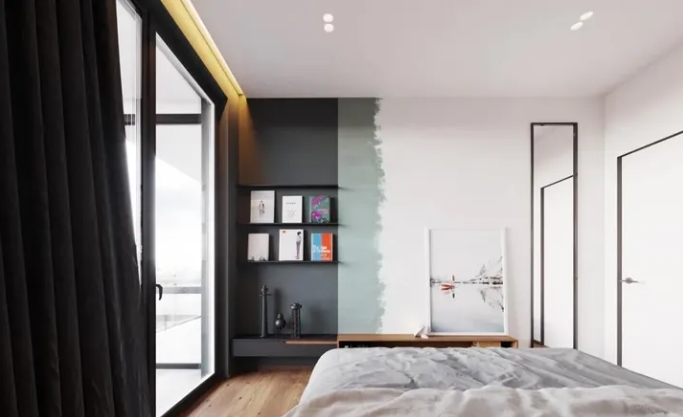

1cm wide, 6w/m linear light strips are most commonly used
② If you want the light strip to be used as the main lighting, the space will no longer be equipped with downlights. It is recommended to choose a 5cm wide, 20w/meter style as the main lighting. @ Dandange reminds everyone: as the main lighting, light strips have relatively high requirements on lighting design and layout. Different light strip combinations are required, and the design must be combined with the lifestyle of the residents. It is recommended to consult a professional lighting designer.
Even if you use this kind of brighter light strip as the main lighting, in order to ensure sufficient illumination for fine operations in areas such as sofas, coffee tables, desktops, etc., it is recommended to use special accent lighting sources, such as floor lamps, table lamps, chandeliers, etc., you can No need for downlights.
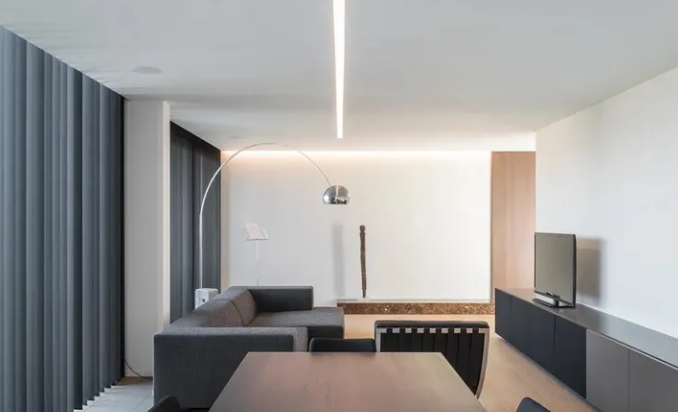

As a linear light strip for wall decoration lines, it is recommended to choose a 1cm wide, 3w/meter style.
2. Do linear light strips have to be installed on the ceiling? Is it difficult to install?
Of course not, not all linear light strips need to be suspended ceilings. There are several common installation types of linear light strips, and there are many types that do not require ceiling installation:
①Lights hidden in the ceiling structure (ceiling required). Usually there is a slit on the edge of the large flat roof of the ceiling, which serves as the installation place for the light strip and the light outlet. This design can not only keep the ceiling minimalist and flat, but also maximize the beauty of the linear light strip.

Ceiling structure hidden lights
②The curtain box hides the lamp (no ceiling required). As the name suggests, the linear light strip is hidden in the curtain box. Many houses have their own curtain boxes, which saves a lot of trouble in installing the light strip. The combination of lighting and curtain fabrics adds a warm, comfortable and quiet atmosphere
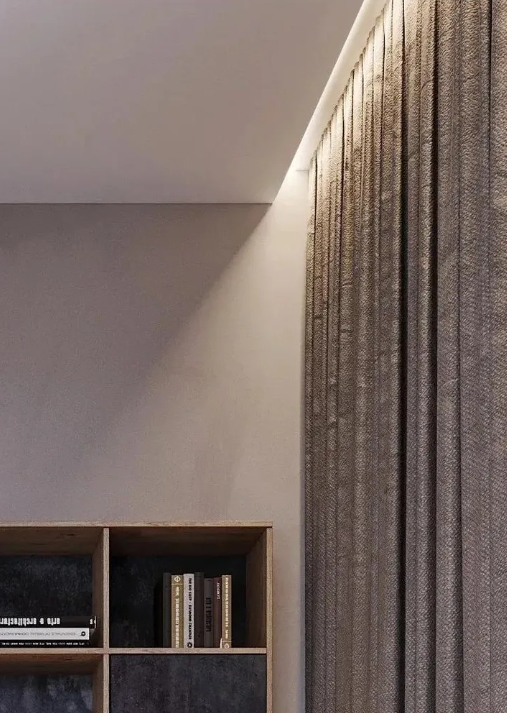
Curtain box hidden lamp
For apartments without curtain boxes, it is not troublesome to make curtain boxes. Curtain boxes do not exist to hide lights, but they make the top of the curtains more beautiful and avoid light leakage. They are also an excellent place to hide lights and save the trouble of hanging ceilings. They serve multiple purposes.
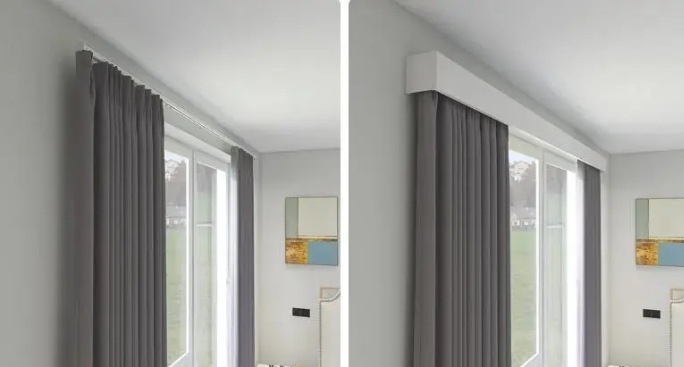
It’s easy to install curtain boxes, which can improve appearance, avoid light leakage, and hide lights
③ Partially suspended ceiling lights (requires partial suspended ceiling). Partial suspended ceiling is one of the most traditional ways to hide lights. It does not need to be a full suspended ceiling. It is usually done as a partial suspended ceiling around the ceiling. It can hide lights or install embedded spotlights. The advantage is that it can provide soft and non-dazzling basic lighting, but the disadvantage is that it is easy to get dusty, and the design is not so simple and beautiful.

Partial ceiling hidden lights
④Aluminum trough lights with hidden lights (no ceiling required). Aluminum trough light strips are a more popular light strip method now. If the ceiling has a suspended ceiling, install it through slots on the ceiling; if the ceiling does not have a suspended ceiling, it can be installed directly on the ceiling through slots (without affecting structural safety). The advantage is that the installation location is not restricted, and the design is more indirect and beautiful. The disadvantage is that if the ceiling is not used, it is relatively troublesome to groove.
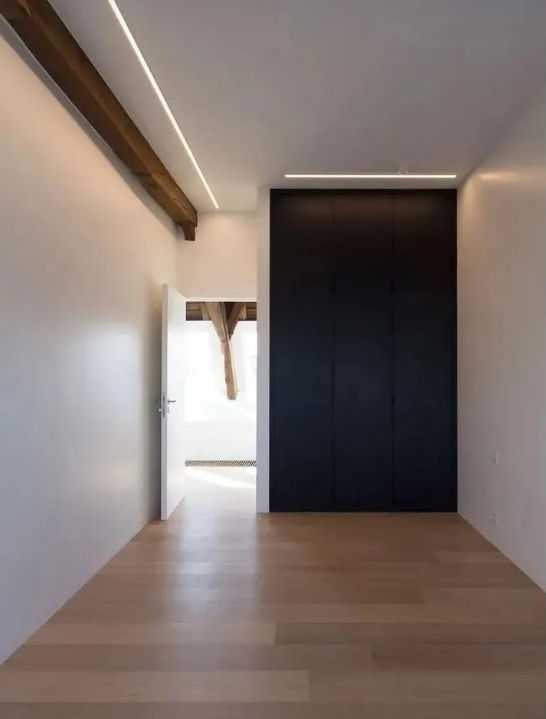
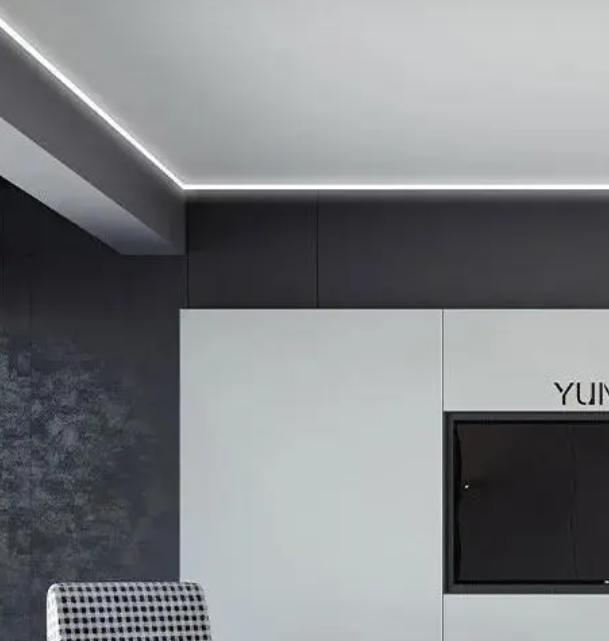
Aluminum trough lights with hidden lights, no ceiling required
In general, linear light strips do not necessarily have to rely on the ceiling to exist. Without making a suspended ceiling, there are still many ways to play with linear light strips. Especially with the aluminum trough light strips (there are many types of aluminum trough light strips, I will not go into details here), the installation restrictions and installation difficulties of the light strips are greatly reduced.
When a suspended ceiling is required, it seems more troublesome. But whether it is a partial suspended ceiling or a full suspended ceiling, you may have to take into account various needs such as hiding central air conditioners, embedded lighting fixtures, hidden pipes, etc. It is very simple to hide a linear light strip by the way, and it can maximize the role of the suspended ceiling.
3. How to repair a broken linear light strip? How to hide the transformer?
The current mainstream light sources are all LEDs, which have relatively high stability and long life. The light source itself is actually not prone to problems. However, household linear light strips are usually low-voltage light strips. To convert household high-voltage electricity to low voltage, a transformer must be used. The current transformer technology is relatively mature and less prone to problems, but its stability is not as high as that of durable LED light sources. Usually problems with linear light strips are mostly due to the transformer.
Therefore, lighting designers will suggest: Do not seal the transformer in the ceiling during installation, but hide it in a place that is easy to repair, such as central air conditioning access, light troughs, tops of cabinets, curtain boxes, etc.
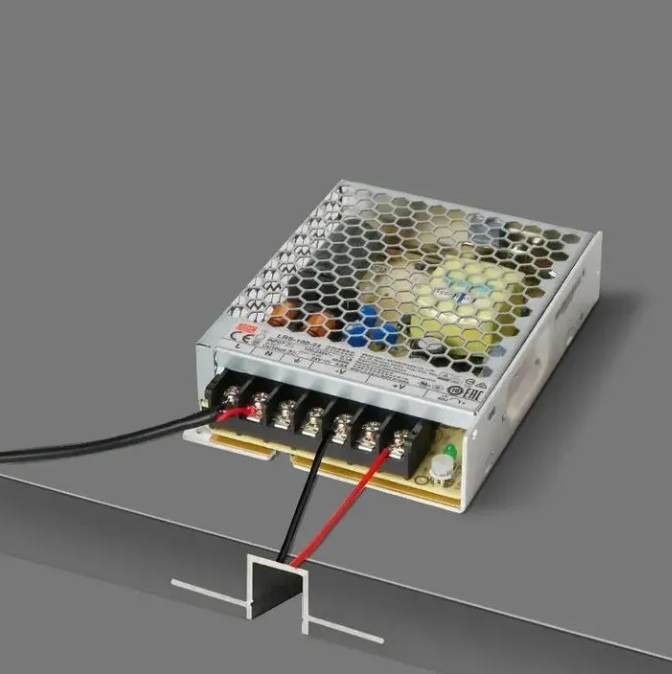
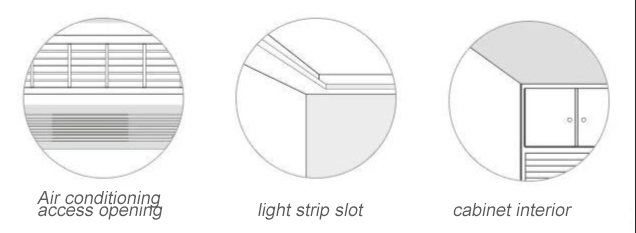
It is recommended to hide the transformer of the linear light strip in a place where it is easy to repair.
If the light strip is installed in a location where it is difficult to hide the transformer, you can use a soft cord to pull out the power and connect it to the transformer, and then hide the transformer in a place that is easy to repair.

Connect the soft cord to the transformer and hide the transformer in a place where it is easy to repair.
Some friends may be worried: Although LEDs rarely have problems, no one can guarantee 100%. What should I do if there is a problem with the lamp beads?
In fact, this problem is easy to solve. Low-voltage linear light strips can be cut and spliced at will. If the lamp beads are damaged, they can be cut and spliced (there is a special light strip interface). The lampshade of the aluminum trough light strip can be easily disassembled and installed manually, and it is not difficult to repair.
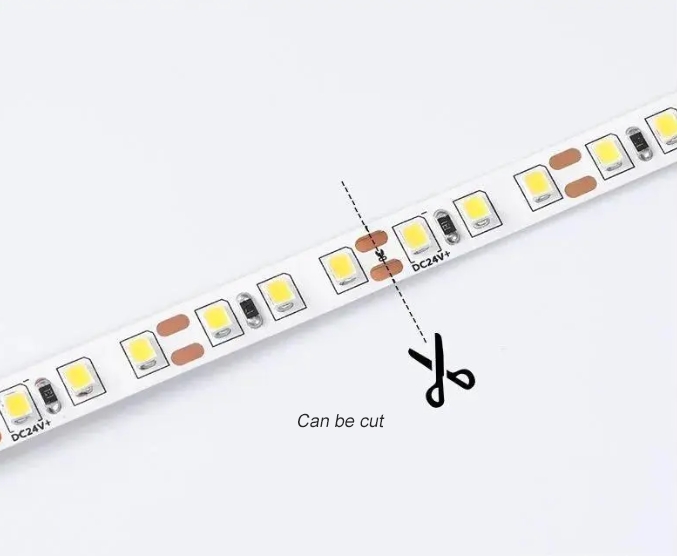
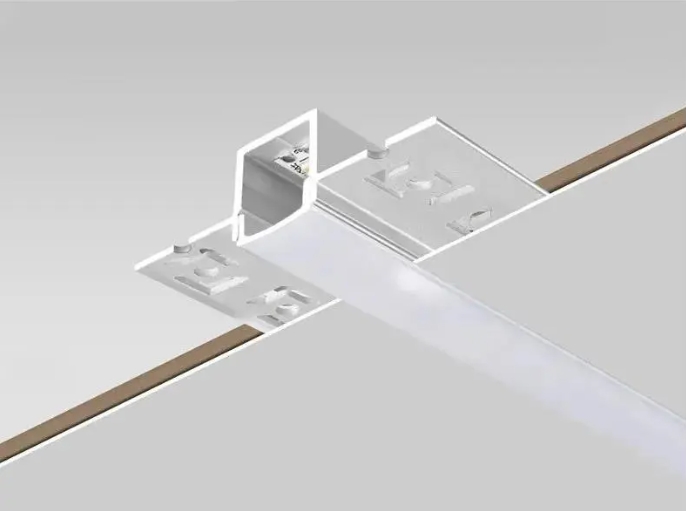
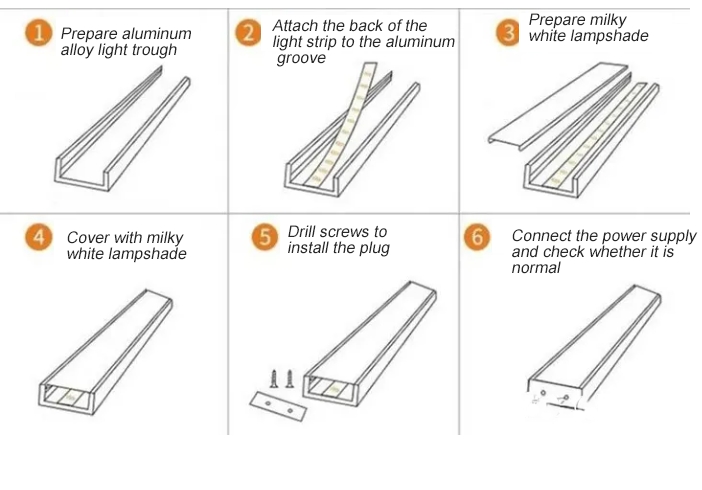
The linear light strip can be cut and spliced, and the aluminum groove lampshade is easy to remove and install.
4. How to choose the color temperature of linear light strips
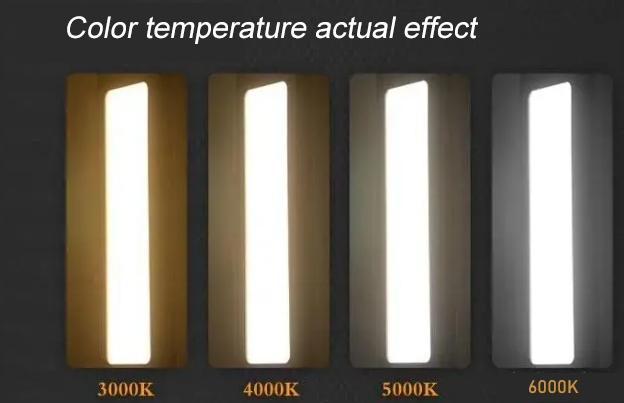
Different light color temperatures
Different spatial scenes have different requirements for color temperature. For example, the living room space has high requirements for light brightness, so it is recommended to choose a color temperature of 3500k-4000k; the bedroom needs a warmer atmosphere, and a brightness of 3000k-3500k is suitable. As decorative lines in public spaces, you can choose a whiter color temperature such as 4000k-5000k, which is more visually fashionable.
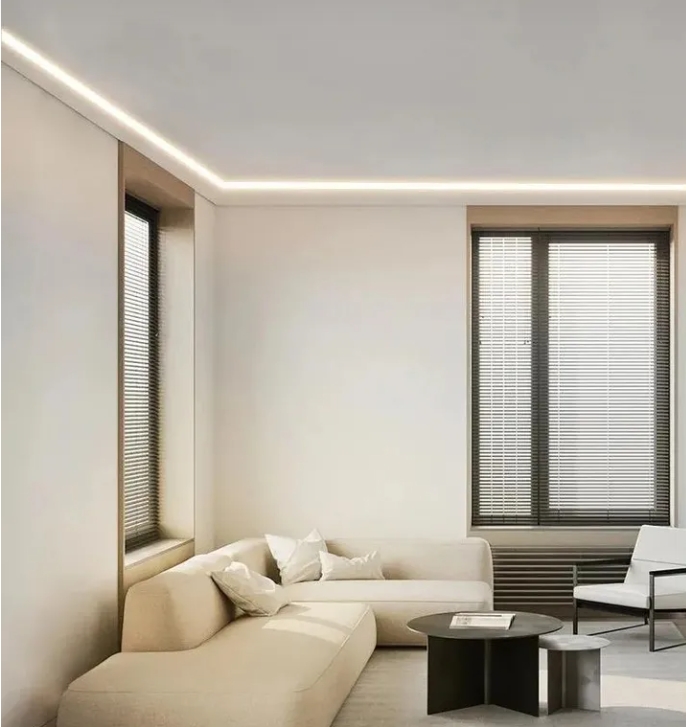
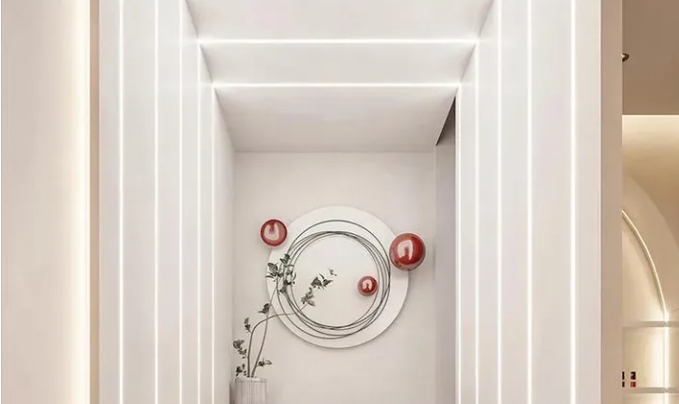
As basic lighting or ambient lighting, you can choose warmer 3000k-4000k light strips, and decorative light strips can choose whiter 4000k-5000k
5. If the aluminum trough light strip is installed on the wall, will the wall crack easily?
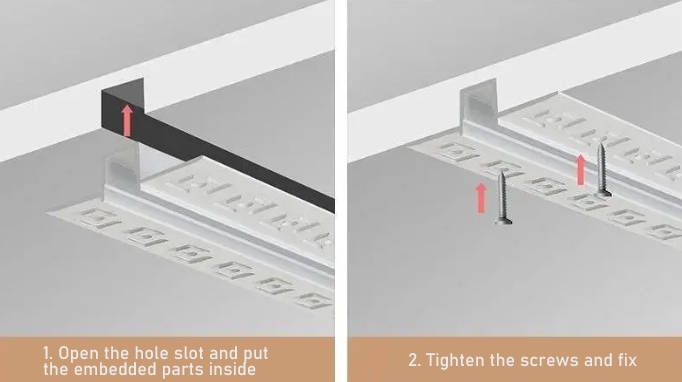

Some decorators are worried that this installation method may cause wall cracking in the future. The problem is easy to solve. You only need to embed the aluminum channel before applying a layer of textured paper, and then paint it to avoid cracking.
The above are the linear light strip issues that friends often ask about.







